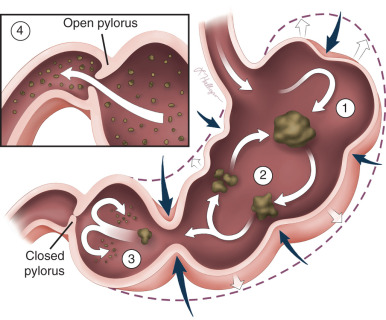Latest post
Post Categories
- No categories
Understanding the surgical treatment options for dysmotility disorders of the colon is crucial for patients. Learn about evaluations, considerations, and outcomes in this detailed guide.
Introduction
Surgical intervention for dysmotility disorders of the colon is a crucial aspect of treatment, albeit for a select group of patients. This article aims to provide a comprehensive understanding of the evaluation process, treatment considerations, and potential outcomes associated with surgical interventions for these disorders
User Insights
Understanding the intricate process of evaluating patients for surgical intervention is paramount in ensuring positive outcomes. Patients must comprehend the nuances of surgical treatment and its implications on their condition.
Evaluating Patient Eligibility
Patients must undergo thorough evaluation to determine their suitability for surgical intervention. This evaluation encompasses various aspects, including medical history, diagnostic tests, and psychological assessment.
Considerations for Surgical Intervention
Several factors influence the decision-making process regarding surgical intervention. These include the severity of symptoms, response to conservative treatments, and the patient’s overall health status.
Outcomes and Expectations
Patients undergoing surgical treatment for dysmotility disorders of the colon can expect significant improvements in bowel frequency and reduced reliance on laxatives. However, it’s essential to manage expectations regarding other symptoms such as abdominal bloating and pain, which may persist or worsen post-surgery.

Treatment Approaches
Surgical treatment options for dysmotility disorders of the colon vary depending on the specific condition and individual patient factors. The following are some of the commonly employed approaches:
Colectomy
Colectomy involves the surgical removal of part or all of the colon. This procedure aims to alleviate symptoms by eliminating the affected portion of the colon responsible for dysmotility.
Colostomy
In cases where conservative treatments and less invasive surgical options have failed, a colostomy may be necessary. This procedure creates an opening in the abdominal wall through which waste can exit the body, bypassing the affected portion of the colon.
Patient Education and Expectations
Educating patients about the surgical treatment options for dysmotility disorders of the colon is crucial for informed decision-making. Patients must understand the potential benefits, risks, and long-term implications of surgical intervention.
Frequently Asked Questions (FAQs)
Surgical treatment can yield favorable outcomes in more than 90% of patients, improving bowel frequency and reducing dependence on laxatives
Complications may include infection, bleeding, and the need for additional surgical procedures in some cases.
No, surgical intervention is typically considered for patients who have not responded to conservative treatments or less invasive interventions.
In some cases, particularly when less invasive options have failed, a stoma may be necessary to divert waste from the affected portion of the colon.
Recovery periods vary depending on the specific procedure performed and individual patient factors. It’s essential to follow post-operative care instructions provided by healthcare professionals
Yes, alternative treatments such as dietary modifications, medication, and lifestyle changes may be considered before resorting to surgical intervention.
Conclusion
Surgical treatment plays a vital role in managing dysmotility disorders of the colon for select patients. By understanding the evaluation process, treatment considerations, and potential outcomes, patients can make informed decisions about their healthcare journey.
Contact Us
Book An Appointment!
To schedule a consultation with our expert colorectal surgery team or inquire about
our services, please contact us at:
Address
212, Kokapet Terminal, Gandipet Main Rd, Kokapet, Hyderabad, Telangana 500075
Phone
+91-7013714402
info@colorectalclinic.com
